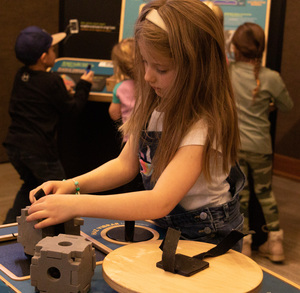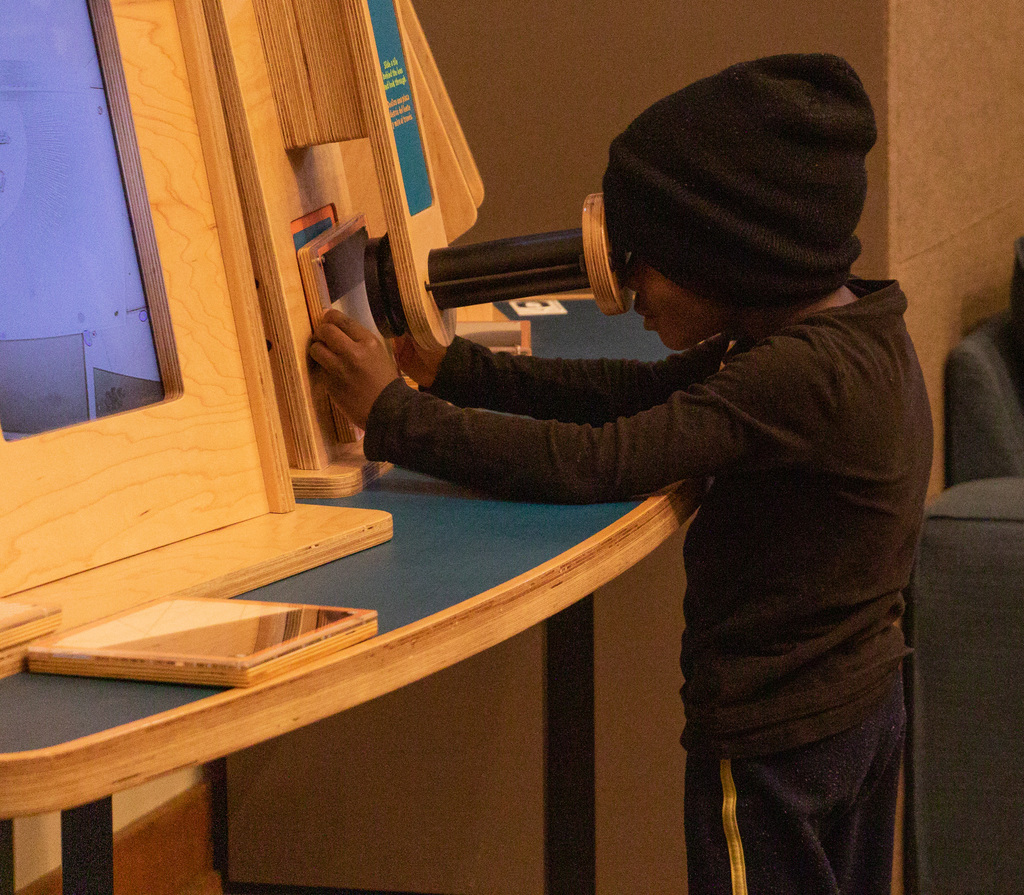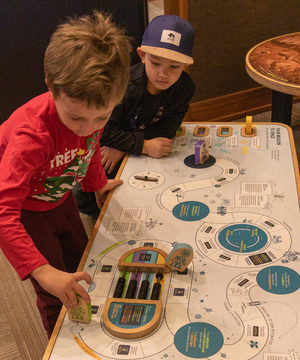Sun, Earth, and Universe exhibit open through April

CHADRON – The Mari Sandoz High Plains Heritage Center at Chadron State College will host the interactive Sun, Earth, and Universe exhibition through April in collaboration with NASA and the National Informal STEM Education Network.
The exhibit, designed for families with children ages 6 to 12, is open Monday through Thursday from 10 a.m. to noon and 1 to 4 p.m., and Friday from 10 a.m. to noon. For families not able to visit during these hours, the Sandoz Center will open Saturdays from 10 a.m. to noon. Those Saturday dates are Jan. 29, Feb. 12, March 19, and April 23.
Dr. Mike Leite, Professor of Physical Sciences, who booked the exhibit, said he is looking forward to school groups and community members visiting the high-quality and entertaining exhibit.
"It will introduce students from college down to the elementary level to some interesting and important science topics. Kids of every age will find something to do and come away with new knowledge about how the Universe works and how scientists and engineers learn about it," Leite said. "There is enough there to keep an interested person occupied for several hours."
The exhibit's focus is on the technology that allows scientists to study the Sun, stars, and other planets, according to Leite.
"It introduces concepts like the electromagnetic spectrum with fun, hands-on exhibits. Visitors can build a spacecraft designed to explore other planets and take it through the design-build-test cycle that engineers do when they design real spacecraft. And they can take their spacecraft home. They can play a board game using the different NASA Mars rovers and landers and learn about all the many steps in pulling off a major planetary mission," Leite said.
According to the Sun, Earth, and Universe website, little scientists are invited to use their imaginations while exploring the surface of the Mars landscape play table with toy rovers and spacecraft, as well as participate in the following hands-on activities:
- Design, build, and test spacecraft models with the tools needed to complete a NASA mission.
- Use an infrared camera, an ultraviolet light, a magnifying glass, and a magnetic field detector to reveal information not visible to human eyes.
- Spin a tumbler of 10,000 beads, representing all the stars that can be seen from Earth to search for the unique one that represents Earth’s Sun.
- Use colored blocks to create a topographic map of elevations on Venus to learn how scientists use color to visualize data.
- Compare images that show the Sun at periods of high activity, called the solar maximum, and periods of low activity, the solar minimum.
Visitors are welcome to sit and browse space-themed books and reading cards and compare before and after satellite images of Earth to see how human-caused actions impact the planet.
On the current events and feedback board, visitors can learn about upcoming astronomical events, local events, citizen science opportunities, and share thoughts about space-themed questions.
Masks are encouraged but not required. Interactive components will be sanitized regularly, and hand sanitizer is available. Call 308-432-6401 for more details.
—Tena L. Cook, Marketing Coordinator
Category: Campus Events, Campus News


